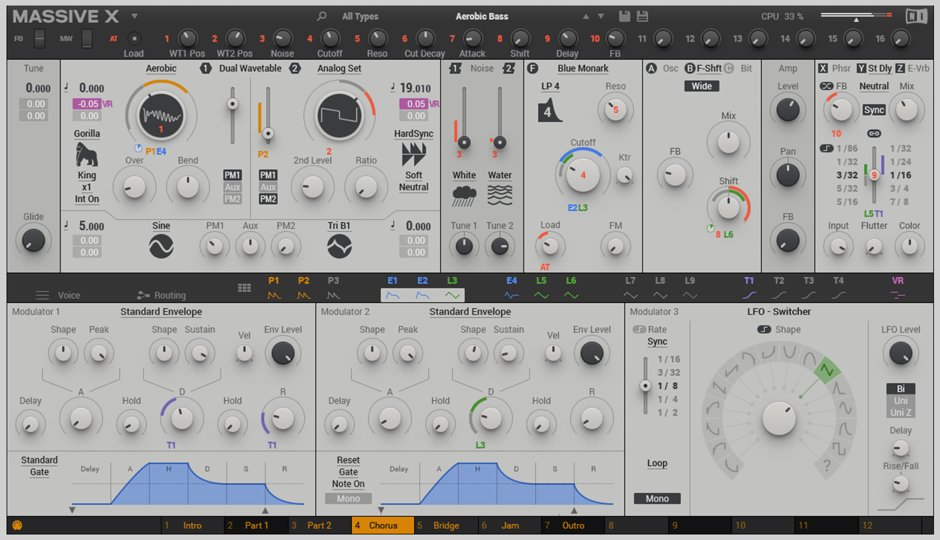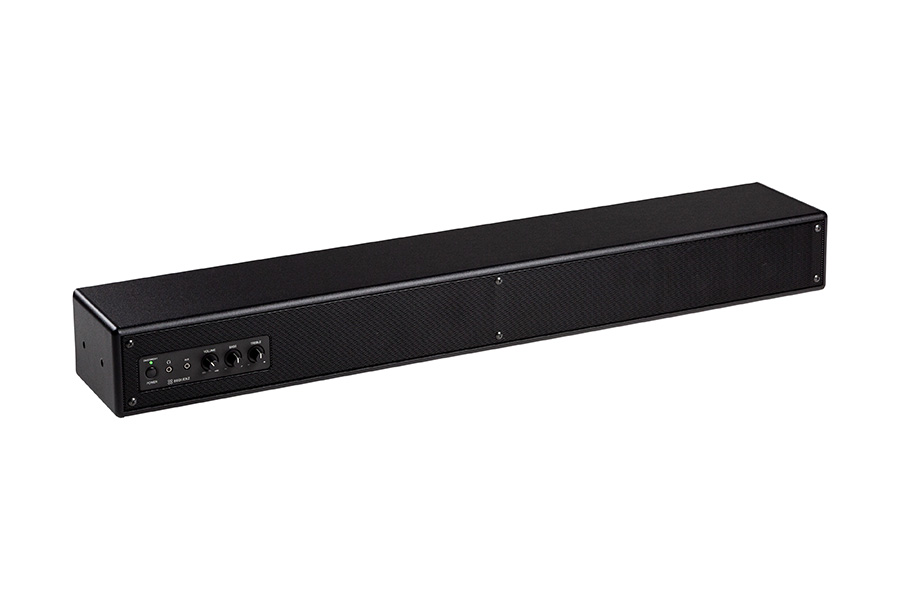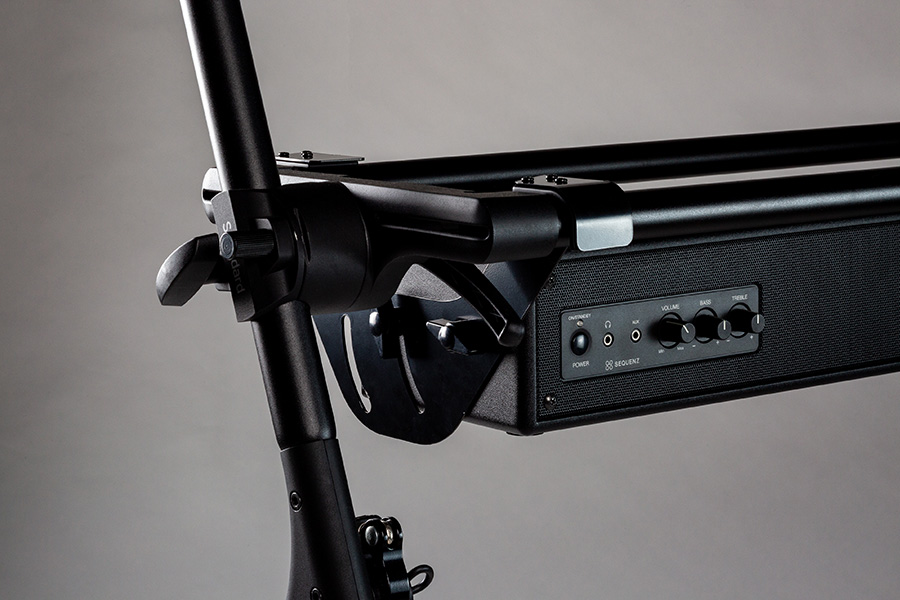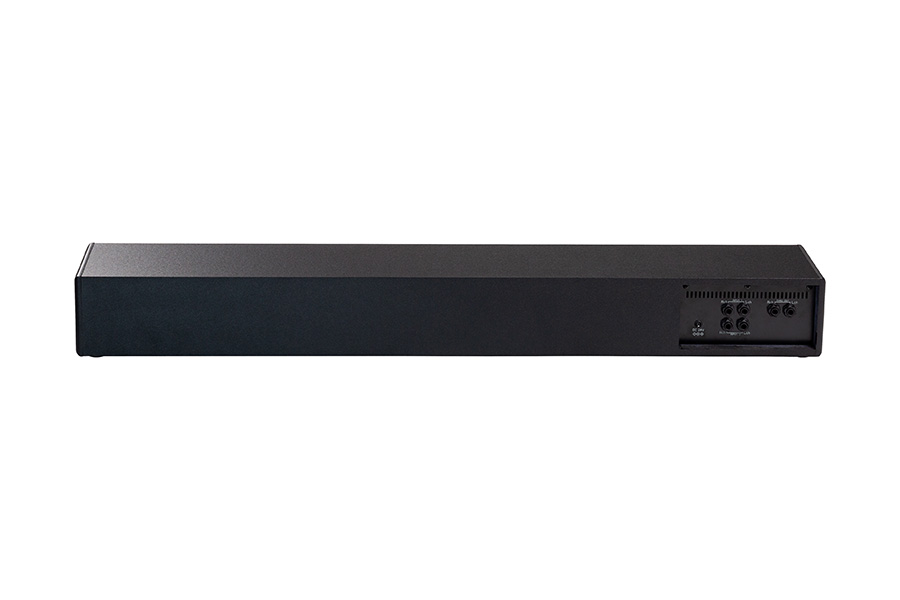-
Posts
7,996 -
Joined
Content Type
Profiles
Forums
Blogs
Events
Articles
Downloads
Gallery
Store
Posts posted by burningbusch
-
-
The partying hasn't stopped for the Patriots.
https://deadspin.com/patriots-owner-bob-kraft-charged-with-soliciting-prosti-1832807440
Busch.
-
This has gone on far too long. Here's your answer:
"Thats the synthesizer overdub that Marcus Miller and I did...One of the synths is definitely A Waldorf microwave and the other sound I believe is a D 50 patch midi-ed together.
And I believe that we did that at Marcuss studio in New Jersey.
Peace,Jason"
I think I should split the $100 with Jason.

Jerry for the win!
"Jason Miles is listed as "programming" which presumes synth but only Marcus Miller is listed as keyboards."
Busch.
-
Also, this came out in 1992. The M1 had a pretty so-so vox pad as I recall but there was nothing on the level of what we have today.
Busch.
-
So if anyone chooses to actually LISTEN to 408 carefully ... that would be cool.
Sounds like synth choir patch to me.
Despite Rickys purported recollection, I hear a synth/voice pad at boldface 4:08.
So, Im down with OP...and I really like this record.
I assume we're talking about the C-A-G, Ab-Gb-F line. Here's a listing of all involved in the album.
Chris Albert Assistant Engineer, Engineer
Chris Alberts Vocals
Don Alias Congas, Percussion, Vocals
Becky Anderson Vocals
Dave Bargeron Trombone, Tuba
Art Baron Trombone
Randy Brecker Guest Artist, Trumpet
Susan Brown-Silag Vocals
Chris Bruce Guitar
Hiram Bullock Guest Artist, Guitar
Steve Byram Artwork, Design
Barry Campbell Vocals
Shannon Carr Assistant Engineer, Engineer
Manny Castillo Vocals
Crispin Cioe Sax (Baritone)
Eric Clapton Guest Artist, Guitar, Soloist
Ornette Coleman Composer
Joe Cuba Composer
Luther Dixon Composer
Cornell Dupree Guest Artist, Guitar
Joe Ferla Engineer, Mixing
Steve Ferrone Vocals
Laurie Frink Trumpet
Bob Funk Trombone
Ava Gardner Vocals
Earl Gardner Trumpet
Lynn Goldsmith Portraits
Bibi Green Production Coordination, Vocals
Stan Harrison Sax (Alto)
Steve Harrison Sax (Alto)
Arno Hecht Sax (Tenor)
Steve Jordan Drums, Timbales, Vocals
Steven "Steven J." Jordan Composer
King Curtis Composer
Robert Lewis Photography
Tommy LiPuma Vocals
Paul Litterall Trumpet
Bob Ludwig Mastering
Jason Miles Programming
Marcus Miller Arranger, Bass, Clarinet (Bass), Composer, Guitar, Guitar (Acoustic), Guitar (Bass), Horn Arrangements, Keyboards, Producer, Vocals
William Patterson Guitar (Rhythm), Vocals, Wah Wah Guitar
Ricky Peterson Composer, Organ (Hammond), Piano
Lenny Pickett Arranger, Horn Arrangements, Sax (Tenor)
John Purcell Flute (Alto), Sax (Tenor), Saxello, Saxophone
Herb Robertson Trumpet
Jimmy Sabater Composer
David Sanborn Composer, Primary Artist, Sax (Alto), Sax (Soprano), Sopranino, Vocals
Art Smith Drum Technician
Richard Tee Organ (Hammond)
Uptown Horns Arranger, Horn Arrangements
Naná Vasconcelos Percussion
Michael White Assistant Engineer
There are a number of vocalists so it certainly could be that. Jason Miles is listed as "programming" which presumes synth but only Marcus Miller is listed as keyboards.
From a review at All Music:
"Directly following his adventurous Another Hand, some listeners were disappointed with the fact that David Sanborn did not permanently switch from R&B/crossover to creative jazz. However, Upfront is generally quite appealing and takes some chances within its genre. Although bassist Marcus Miller is once again an important collaborator, the emphasis is on "real" instruments, most notably the organ of Ricky Peterson."
Busch.
-
I think that's absolutely right: it may not be easy to track down a used RD-64, at least one that hasn't been too abused (or else why would they sell it!).
Reasonable price. Listed as mint. Seller seems OK.
https://reverb.com/item/18769638-roland-rd-64-black
Busch.
-
AFAICT, the EPs are the same as whats in the Montage/MODX. They sound good, but not world-beating like the CFX and Imperial samples.
Oh, i thought the EPs are new samples...? And from what i hear in the demos, they sound different... (?)
I didn't do an in-depth side-by-side comparison, but they sounded and felt very similar to my MODX.
Since the CP-1, Yamaha has been using, for the most part, a naming of the Rhodes using dates. For example, the CP-1 included:
71Rd I
73Rd I
75Rd I
78Rd II
Dyno
AFAIK, these are all present in the CP-5 and CP-4
The Montage/MODX has all the original "small" sampled Rhodes from the Motif/S90 series PLUS two named RD Soft (five velocities) and RD Hard (four velocities) respectively. In addition, there are two sampled versions, apparently, of the CP-1/4/5 SCM Rhodes named Rd73 and Rd78. My ear tells me Rd73 and Rd78 are possibly re-samples of a CP-1 as you can hear some of the SCM elements in the lowest velocities that don't sound like an actual Rhodes but more like a re-sampling. I certainly could be wrong. Regardless, they sound very familiar to the CP-1/4/5.
The new CP88/CP73 only list three: Rd78, Rd75, Rd73. As these are purportedly sampled, I think they might be close to those sampled versions on the Montage/MODX.
Busch.
-
Thanks for the kind words above. I'm really anxious to get back into working with the Forte especially given this update. What a great instrument.
Busch.
-
This is great! Turns the Forte into a ModX for the price of a Montage.
Wake me up when the Montage has a VA, B3 clone, twice its current user flash, a 16-part sequencer, and a programming environment 1/4 as powerful as VAST.
Busch.
-
Don't know if everyone can get to this link, but here's the video from Facebook.
https://www.facebook.com/kurzweilmusicsystems/videos/2180426728645066/
Busch.
-
A couple of things I dont get:
1 - Update for new sounds is going to be September 2019
2 - CP73 action is designed to be closer to playing an electric piano.
1 - well that is a long time to wait. Nord are constantly adding to their library. Putting a date on it seems strange and why is it so far in the future?
https://usa.yamaha.com/products/music_production/synthesizers/cp88_73/update.html#product-tabs
2 - which EP are we talking about. My EP200a has a lovely action - fast and light. My Rhodes suitcase is the complete opposite - heavy and sluggish. Maybe they mean the CP70/80?
Neither the Rhodes nor Wurly 200A utilize key weights (I'm positive on the Rhodes and nearly positive on the Wurly but mine isn't set up at the moment). The keys are just wood, so they will have uniform weight throughout. The hammers of the Rhodes (neoprene, not Sparkletop felt) are virtually all the same and there's no appreciable mass difference. The 200a does use somewhat more massive felt in the bass vs. treble but I don't think it makes much of a difference in the weighted feel of the keys. The dampers on both pianos are uniform across all keys, as I recall. So, there's a big difference between these actions and an acoustic piano. They are much more balanced and I believe the CP73 is going to incorporate the balanced action as found in the Montage 8. Also, the bounce you find with the Rhodes is the result of the lack of back check, an important part of an acoustic piano action.
Busch.
-
In related news, I've decided to postpone my upgrade to Komplete 12 due to needing more time.
Does look nice.

Busch.
-
Speaking of Nord comparisons, do these boards have that super-advanced feature that lets you put the split point anywhere you want?
My god, what kind of miracles do you expect from these companies?
Busch.
-
Somebody mentioned earlier that Yamaha dropped SCM modelling, but CP88 EP's sound to me exactly like CP4, which are SCM.
The EPs on the Montage/MODX sound VERY similar to the CP1/5/4 to me (and are named similarly), and those are sampled. My thought is they sampled a CP-1 or derived the samples from the original sampling/recordings which became the SCM EPs.
Busch.
-
They are in fact, using the same action as a Montage 8 in the 73. I've played both of them.. I prefer the 88, though I wish it had escapement.
Does the action have a heavier feel on the 88? I have the Montage 8 and wish it were heavier.
Busch.
-
Looks very nice. I like the CS80 colored tab switches! More detailed information can be found here:
Busch.
-
A few observations about the Montage/MODX after I've been programming for the last couple of months.
Let me compare it with the Kronos, which I know well. Talking now about working within the Program structure. With the Kronos, everything is pretty much at max. The amp section, by default, is maxed. So too are the output(s) of the filter(s). If you use an EQ, there is an option to lower the output gain (in the case where you raise a band into distortion) but no way to raise it above 0db. In fact, the Kronos has so few options for raising gain that often your only recourse is to employ the compressor trick where you insert a compressor, set the ratio to 1:1 and then raise the output gain. It's relatively hard to drive the Kronos into distortion though it can be done with the amp sims, for example.
In contrast, the Montage/MODX offers many opportunities to increase gain within the Performance.
Within the Element (I'll leave out the obvious things like amp gain):
- The output of the filter is 230 by default but can be increased to 255.
- The output of the element (Element EQ) can be boosted by 6/12/18db.
In the Common section for the Part:
- The Output level (post-EQ) can be raised by as much as 12db.
- Many FXs allow the boosting of gain. For example, the VCM EQ 501 allows +/-12db.
You, of course, have the overall volume of the Performance and this could very well need to be lowered from 127 if the internal output stages of the Elements/Parts are boosted too much. In short, Yamaha provides many places where gain can be increased and it becomes much more of a balancing act than with keyboards like the Kronos. I personally welcome it, though it's a bit more work.
Regarding the +6/12db boost at the Main Outputs, you can balance that with the setting at Utility-->Settings-->Sound-->Volume. So if you're getting distortion at +6db, try lowing that volume setting a bit. It can get you somewhere in between 0 and +6db. I agree that the APs are quite hot and kind of throw off the balance of the other instruments. Easier to pull them down a bit than to try to bring everything else up.
Busch.
-
Reminds me A LOT of Serum. The presets don't knock me out like Serum, but I do like some of what I've heard, in particular, the tails on the some of the pads. Nicely programmed. At $69 I'll probably do it. Actually glad it's not another vintage recreation.
The UI is VERY good, IMO. The visuals look great and provide very useful real-time information. A modern, clean look from the king of skeuomorphism.
Busch.
-
You can hear a Wurly EP throughout in this isolated mix.
[video:youtube]https://www.youtube.com/watch?v=A8VaV6cEnPA
Man, that's nice. I wish they had that kind of stuff when I was growing up.
Busch.
-
An update on the looping issue. I got a response back from Melas stating the Motif/Montage have an issue that if a WAV contains any audio after the loop, this can create audible artifacts. So I went through, re-edited everything, made sure there is nothing after the loop both in Wavelab and in the Melas Waveform Editor and I'm still getting artifacts that don't show up when the WAVs are played back on the computer or when saved as an X7U in SampleRobot. So something else is amiss. I've spent far too much time on this issue. SampleRobot can function as a tool to bring in WAVs, create waveforms (Yamaha-speak for multi-samples) and then export those as an X7U. But it's not as versatile for doing that as is the Melas Editor. But at least the results are good.
Here's an example of the issue:
Looping Issue: 1st SampleRobot - 2nd Melas Editor
Busch.
FYI, this issue has been fixed in the latest release of the Montage Waveform Editor.
http://www.jmelas.gr/montage/wave.php
Busch.
-
Glad someone is making this option available for players doing solo or light combo gigs. Designed to work with the Sequenz stands but can be used standalone or placed on top a slab DP (6" depth).
https://sequenzmusicgear.com/en/products/lineup5/#sonicbar



Busch.
-
[...] I think the screen is fine, but I frequently get double-strikes most noticeably when using the virtual keyboard. Never had this issue with the Kronos.
Busch.
That might be related to touch screen calibration - or not.
See:
https://www.yamahasynth.com/forum/montage-touch-screen-doubling-my-touch
https://www.yamahasynth.com/forum/touchscreen-debouncing-problem-still-in-os-2-0
Thanks. I tried the suggestions and it seemed to help some, but did not completely alleviate the problem for me.
Busch.
-
You are one helluva programmer and you always get much respect from me as always but going with the Montage makes much more sense.
Looking forward to hearing the samples that you bring to Yamaha!
Thanks Benny.
Busch.
-
Why did you get rid of the MODX? I always respect your opinions but I tried the Montage and the MODX side by side and to my ears the Montage was much better hands down. I know you were sold on the MODX at first what changed your mind just curious?
I'm working on bringing some of my sample libraries to Yamaha. With the MODX, I can't create products for the Montage. With the Montage, I can do both. My initial plan was to buy the MODX and rent a Montage to keep costs down, but I decided to go the Montage route in the end.
I do like and frequently use the additional buttons on the right to select parts/elements. I could do this on the screen, but the buttons make the process quicker. I use these all the time. I also justified it by the idea that the FM polyphony on the Montage makes my TX816 redundant. It is infinitely easier to deal with. The more limited polyphony on the MODX prohibits it from being a complete TX816 replacement. Also, based purely on the specs I didn't think the Montage would fit on my main studio desk (an Argosy console) but after renting it, it turns out it does fit.
Busch.
-
The screen reminded me of my Krome's screen rather than the Montage screen in feel.
I have both and to me the MODX' display feels better than the Krome's.
I believe it's the same screen on the Montage and MODX. I had a MODX for a short while and now have a Montage. I think the screen is fine, but I frequently get double-strikes most noticeably when using the virtual keyboard. Never had this issue with the Kronos.
Busch.







I'm allowed one stupid thread, so let's talk weighted small
in The Keyboard Corner
Posted
https://reverb.com/item/18874564-dominicus-pisaurensis-1543-reissue-custom-clavichord-from-kit-table-top-harpsichord-sounds-great
Busch